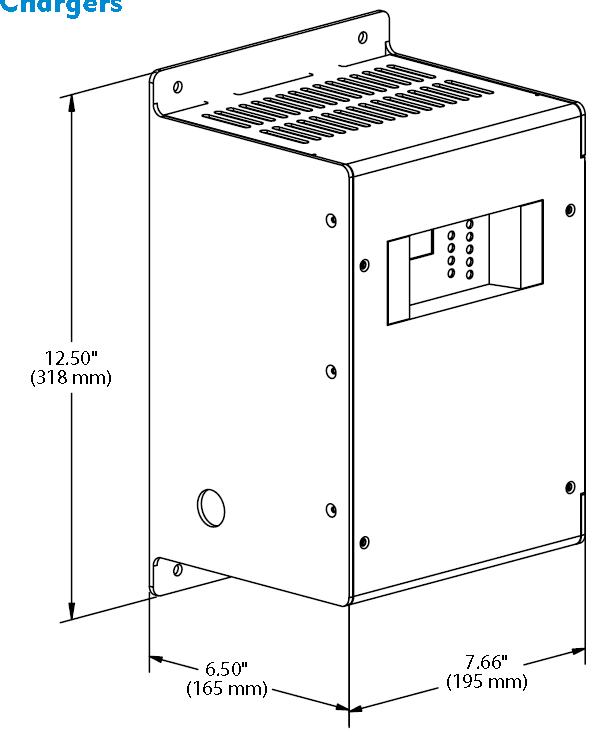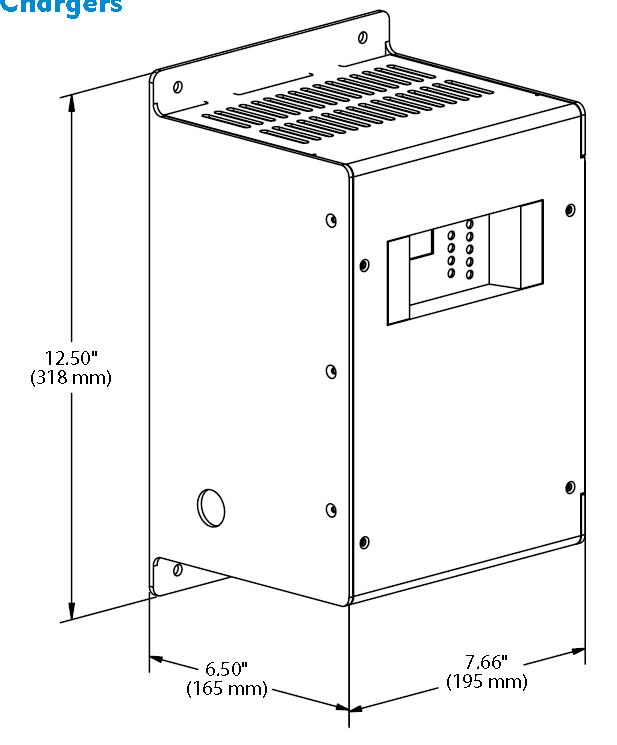
2 minute read
UL battery charger
Image Shown may not Reflect Actual Package
UL 10 AMP BATTERY CHARGER
60 Hz only
This battery charger offers accurate, automatic charging of lead-acid and nickel cadmium batteries. The output voltage automatically adjusts to changing input, load, battery and ambient conditions. This prevents battery over-charging and consequent loss of battery electrolyte.
Standard features include AC line compensation, precision voltage regulation, current limiting, automatic 2rate charging, voltmeter and ammeter, temperature compensation and UL Listing.
The user interface is easy to understand with digital metering, NFPA 110 alarms and a battery fault alarm.
SPECIFICATION FEATURES
Input Supply 110-120 V · Electronically current limited at 105% of rated output 208-240 V · Alarm system
AC and DC Fuses Output voltage Frequency
(2 input and 2 output) · Digital Display 12V · Lightning and voltage transient protection 60 Hz · Protection of connected equipment against load Operating temperature -20°C ( -4°F) dump protection to +60°C (140°F) · Constant voltage, current limited, 4-rate automatic Housing constructed of rustproof anodized equalization aluminum. · IP 20 housing
STANDARDS
· C-UL listed to UL 1236 · NFPA 70, NFPA 110 · CSA 22.2 No 107 certified · UL 1564 · CE DOC to EN 60335 · IBC Seismic Certification · AC isolated from DC · Temperature Compensation - On board temperature sensor with remote port · Auto AC line compensation · Output regulated by sensed battery voltage
Output Input Amps Volts Hz Volts 10 12 60 110-120 208-240
Width Depth Height Weight 195 mm 165 mm 318 mm 10.4 kg (7.66") (6.50") (12.50") (23 lb) Feature code

PBC10NU
OPTIONS
NFPA 110 alarm package as follows: · AC on Green led (indication) · AC fail Red led and form C contact (2A) · Float mode LED · Fast charge LED · Temp comp active LED · Low battery volts Red led and Form C contact · High Battery Volts Red led and Form C contact · Charger fail Red led and Form C contact · Battery fault Red led and Form C contact - Battery disconnected - Battery polarity reversed - Mismatched charger battery voltage - Open or high resistance charger to battery connection - Open battery cell or excessive internal resistance
Information contained in this publication may be considered confidential. Discretion is recommended when distributing. Materials and specifications are subject to change without notice. CAT, CATERPILLAR, their respective logos, “Caterpillar Yellow,” the “Power Edge” trade dress as well as corporate and product identity used herein, are trademarks of Caterpillar and may not be used without permission.
www.Cat-ElectricPower.com










